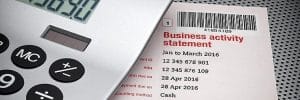Depreciation, or decline in value, is the cost of the vehicle spread over its effective life. Depreciation of cars for tax purposes can be claimed when used to produce taxable income.
In Australia, you can choose to claim business vehicle depreciation using either general depreciation or simplified depreciation rules. Some points to consider when making a depreciation claim include:
- the cost of the vehicle
- the depreciation rule, or method of depreciation
- the effective life of the vehicle
My Uber Income app makes it easier to calculate vehicle depreciation, BAS and tax return. Try it for free clicking here.
1) Simplified depreciation
If the vehicle was purchased in the year you started driving for Uber, the method will depend on the value of your car:
UPDATE MARCH 2020:
From 12 March 2020, the instant asset write-off threshold amount for each asset is $150,000 (up from $30,000)UPDATE MAY 2019:
The instant asset write-off threshold has been increased to $30,000 and extended to 30 June 2020.
If you purchase an asset (new or second hand) costing less than $30,000 and it is used or installed ready for use from 7:30pm AEDT on 2 April 2019, you can claim a deduction for the business portion.
Different thresholds apply for assets purchased before that date:
– from 29 January 2019 until before 7.30pm AEDT on 2 April 2019, the threshold is $25,000
– before 29 January 2019, the threshold is $20,000.
a) instant asset write-off for vehicles under $30,000: if your Uber vehicle cost less than $30,000 you can immediately claim the full value back as a tax deduction in the same year you purchased it. A couple of important points are:
– when you sell the car or stop driving for Uber: you must pay income tax on the sale price/market value of the car, subject to your logbook. Therefore, the write-off is worthwhile if you plan to drive for Uber for a number of years, or if you have a high Uber tax bill in the current year.
– claiming loss against other taxable income : if your tax deductions (including the write-off) are more than your Uber income for the year, this creates a loss, which means you’ll pay no tax on your Uber income for the year. However you cannot claim the remaining loss against other taxable income unless your Gross Uber Fares for the financial year are over $20,000 (excl GST). If they are not, then your loss will be ‘carried forward’ and can only be claimed against Uber profits in future years, or if your Gross Uber Fees exceed $20,000 (excl GST)
b) pooled assets for vehicles over $30,000: if you buy a vehicle that falls outside the instant asset write-off threshold, you can still deduct it, but accelerated depreciation rules won’t apply. You would ‘pool’ an expensive vehicle into a small business asset pool and claim a 15% deduction in the year you bought it, and a 30% deduction each year after the first year
2) General depreciation
If the vehicle was purchased before you started driving for Uber, you can claim deductions of your business vehicle using one of two methods:
a) prime cost: this method assumes the vehicle’s value declines uniformly – that is, depreciating by equal amounts each year. You claim a fixed amount each year based on the following formula:
Asset’s cost × (days held/365) × (100%/asset’s effective life)
Example: if your car cost $30,000 and has an effective life of four years, you can claim 25% of its cost, or $7,500, in each of the four years. The calculation is $30,000 x (365/365) ×25% = $7,500
b) diminishing value: this method assumes that the vehicle’s value drops sharply in its early years. The following formula is used for the diminishing value method:
Base value × (days held/365) × (200%/asset’s effective life)
Example: if your car cost $30,000 and has an effective life of four years, the claim for the first year will be $30,000 × (365/365) × (200%/4) = $30,000 x 50% = $15,000
The base value reduces each year by the decline in the value of the asset. This means the base value for the second year will be $15,000 (that is, $30,000 minus the $15,000 decline in value in the first year). The claim for the second year will be $15,000 × (365/365) × (200%/4) = $15,000 x 50% = $7,500. In the third year, the base value will be $7,500 and the claim will be $3,750. In the fourth year, the base value will be $3,750 and the claim will be $1,875. This will continue until the value reaches zero.
Business vehicle’s effective life
General depreciation rules require a determination of the effective life of a vehicle in order to calculate either prime cost or diminishing value methods. To work this out, you can use one of the following:
- ATO determination: a standardised rate as set out by the ATO and published annually in taxation rulings
- self-assessed determination: a self-assessed estimate based on the features of the vehicle and the way it’s used. If you drive for Uber around 60 hours a week, the car useful life is probably closer to four years. In this scenario, you’d be better off performing a self-assessment over the standard eight-year effective life determination set out by the ATO.
Sources:
https://www.ato.gov.au/business/depreciation-and-capital-expenses-and-allowances/general-depreciation-rules—capital-allowances/prime-cost-(straight-line)-and-diminishing-value-methods/
https://quickbooks.intuit.com/au/resources/small-business-accounting/guide-business-vehicle-depreciation/
https://www.drivetax.com.au/buying-a-car-for-uber/





Could you please make it clear in the headline which country this information is valid for? The internet is global and readers are from all over the world.
Its for Australia, I believe as ithe website says .com.au
How do you work out general car depreciation if you use the car half for Uber and half personal?
Multiply your car depreciation by your car business usage as per your logbook.
the car is under my wife’s name but i use it full time with uber.can i apply the depreciation for my taxation?
Yes, but see ATO complete response here: https://www.ato.gov.au/Individuals/Income-and-deductions/Deductions-you-can-claim/Vehicle-and-travel-expenses/Car-expenses/#Before1July2015fourmethods